Eumorpha satellitia licaon
|
|
Updated as per
AN ANNOTATED CHECKLIST OF THE SPHINGIDAE OF BOLIVIA, October 2007
Updated as per http://www.pybio.org/SPHINGINAE.htm (Paraguay), October 2007
Updated as per http://biological-diversity.info/sphingidae.htm (Belize), November 2007
Updated as per Fauna Entomologica De Nicarauga, November 2007
Updated as per The Known Sphingidae of Costa Rica, November 2007
Updated as per CATE (Paramba, Imbabura, Ecuador); February 5, 2011
Updated as per personal communication with Brian Fletcher (Sorzoranga, Loja, January 30, 2014, 1600m); March 10, 2014
Updated as per personal communication with Brian Fletcher (Urraca Lodge, Jorupe Reserve, Loja, Ecuador, 500m); March 13, 2014
Updated as per personal communication with Marcial Garcia (Venezuela: Monagas: Caripe, 800m, May 25, 2018); May 26, 2018
|
Eumorpha satellitia licaon
(Cramer, 1776)
Sphinx
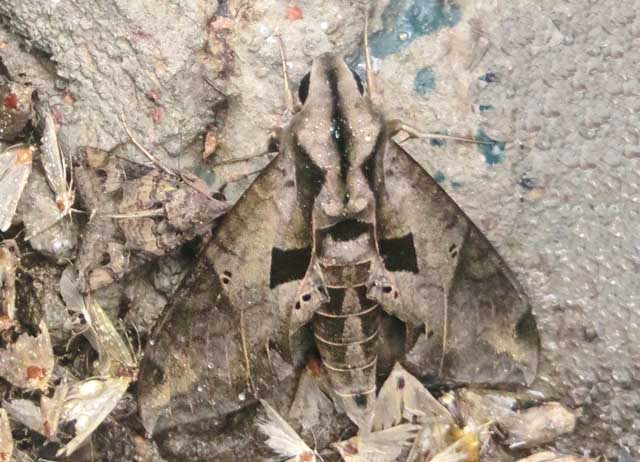
Eumorpha satellitia licaon, Sorzoranga, Loja, Ecuador,
January 30, 2014, 1600m, courtesy of Brian Fletcher, id by Bill Oehlke.
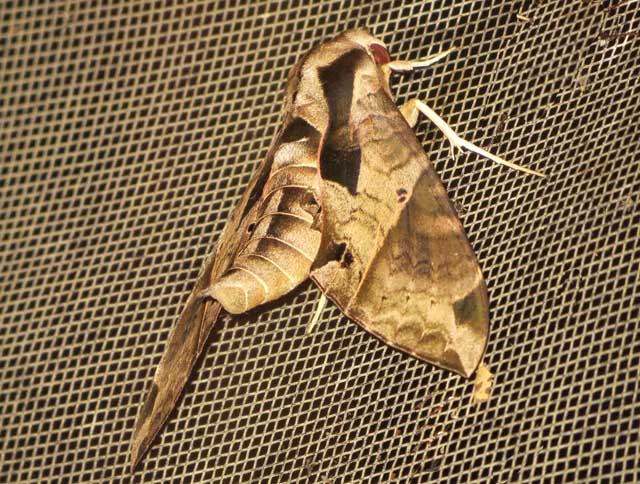
Eumorpha satellitia licaon, Urraca Lodge, Jorupe Reserve, Loja, Ecuador,
January 30, 2014, 500m, courtesy of Brian Fletcher, id by Bill Oehlke.
This site has been created by Bill Oehlke .
Comments, suggestions and/or additional information are welcomed by Bill.
| TAXONOMY:
Superfamily: Sphingoidea, Dyar, 1902
Family: Sphingidae, Latreille, 1802
Subfamily: Macroglossinae, Harris, 1839
Tribe: Philampelini, Burmeister
Genus: Eumorpha, Hubner, [1807]
Species: satellitia excessus, (Cramer, 1776) |
DISTRIBUTION:
Eumorpha satellitia licaon flies from
extreme southern Texas and
Mexico;
Nicaragua: Madriz, Matagalpa,
Boaco, Chinandega, Leon, Managua, Masaya, Granada, Rivas, Chontales,
Rio San Juan;
Costa Rica: Guancaste, Puntarenas, Alajuela,
Heredia, Cartago, Limon;
south to
Ecuador: Imbabura: Paramba; Loja
Venezuela: Monagas: Caripe (MG);
Brazil;
Bolivia: Santa Cruz, La Paz (700-1000m);
Paraguay: Alto Paraguay, Boqueron, Presidente Hayes,
Concepcion, Canindeyu, Cordillera, Guaira, Caaguazu, Alto Parana,
Paraguari, Caazapa.
Mike Quinn provides this larval image from extreme southern Texas.
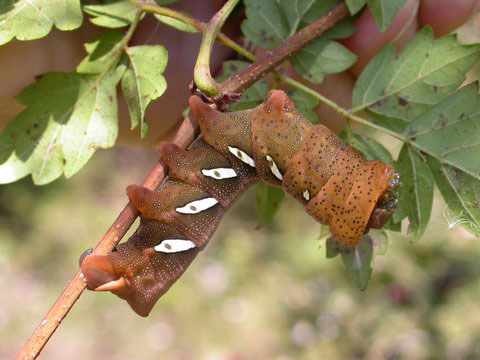
Eumorpha satellitia licaon, October 24, 2005,
Hidalgo County, Texas, courtesy of Mike Quinn.
Based on information from James P. Tuttles new book, The Hawk Moths of North America, the larva depicted above
is more likely the subspecies licaon, a stray from western Mexico into southeastern Arizona and Texas.
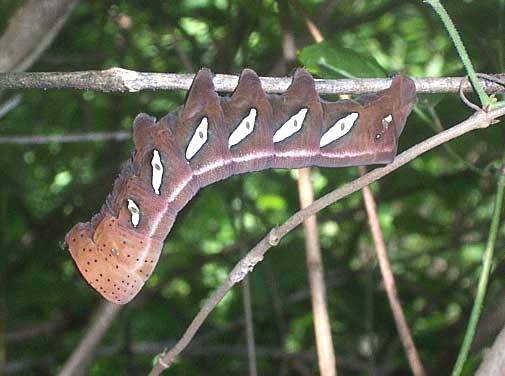
Eumorpha satellitia licaon, Jalpan, Queretaro, Mexico, July 21, 2007, courtesy of Jim Conrad.
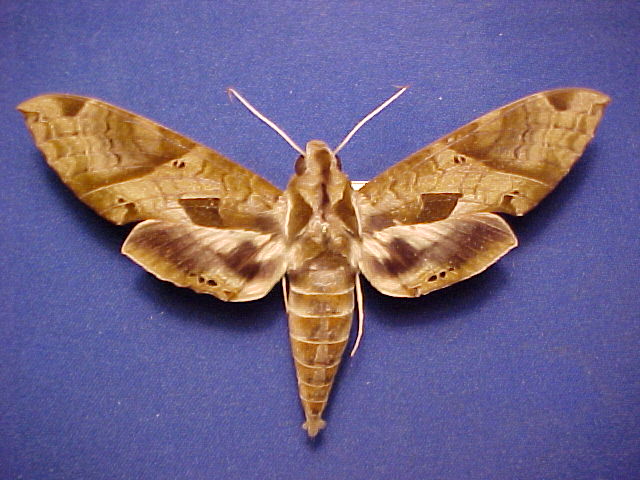
Eumorpha satellitia licaon by
John Vriesi
Eumorpha satellitia licaon is somewhat variable in ground colour, but it is generally greyer
than Eumorpha satellitia satellitia and never as green as Eumorpha pandorus.
The hindwing upperside inner margin is marked with a few red scales. CATE

Eumorpha satellitia licaon, Caripe, Monagas, Venezuela,
May 25, 2018, courtesy of Marcia Garcia, id by Jean Haxaire.
FLIGHT TIMES AND PREFERRED FOOD PLANTS:
Eumorpha satellitia licaon adults are on the wing in January, February, April, May, June, November.
There are probably additional flight months with flights occuring at different times depending upon latitude and climate.
Eumorpha satellitia licaon larvae feed upon ??
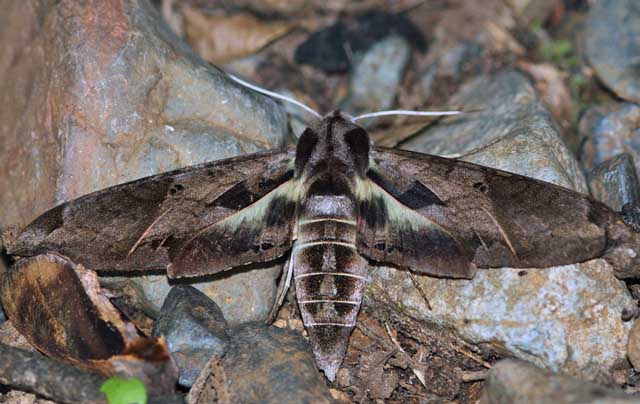
Eumorpha satellitia licaon, Urruca Lodge, Jorupe National Park, Loja, Ecuador,
February 17, 2011, courtesy of Pia Oberg.
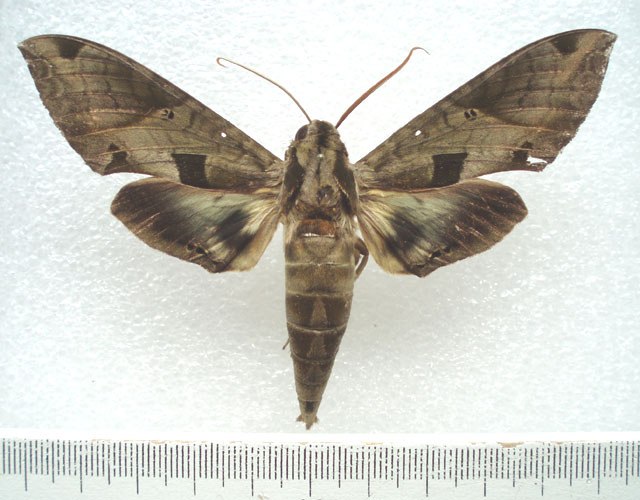
Eumorpha satellitia licaon, Pook's Hill Reserve, Cayo District, Belize,
June 23, 2006, courtesy of Brant Reif, id by Vadim Kroutov.
ECLOSION, SCENTING AND MATING:
Pupae wiggle to surface just prior to eclosion. Females call at night,
and males (below) fly into the wind to pick up and track the pheromone plume. Eumorpha satellitia licaon
in typical restiong pose. Image courtesy of James Adams. | 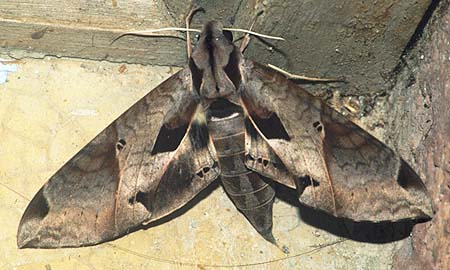 |
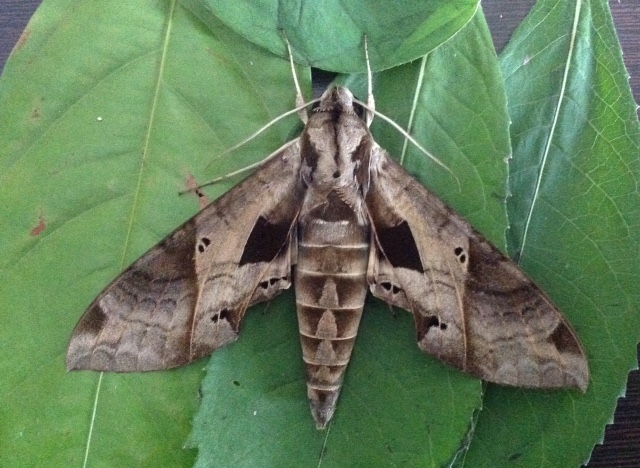
Eumorpha satellitia licaon, Radisson, Panama, Panama,
April 19, 2014, courtesy of Tony James.
EGGS, LARVAE AND PUPAE:
Females lay translucent green eggs singly on leaves of the
host plant. This egg is about to hatch. The anal "horn" is visible through the shell. This image and the following
images (courtesy of Dan Janzen) represent specimens from Costa Rica, and shouild be subspecies licaon. |
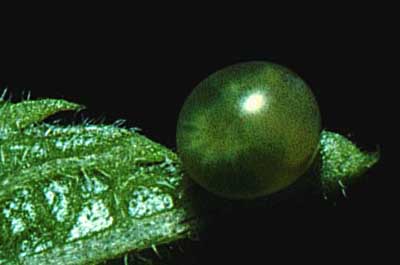 |
Larvae get quite large and consume copious amounts of foliage. Missing leaves and droppings on
the ground, are quick clues that one of the Eumorpha species is on a vine. Parasites take a high toll.
| 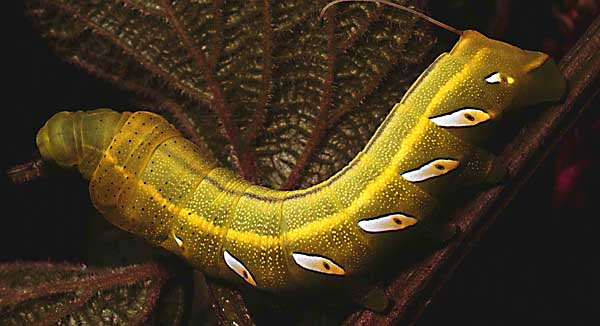 |
When disturbed, the larva quickly retracts the head and thorax. White stripes are elongate and smooth, not
irregular as in achemon or more circular as in pandorus. |
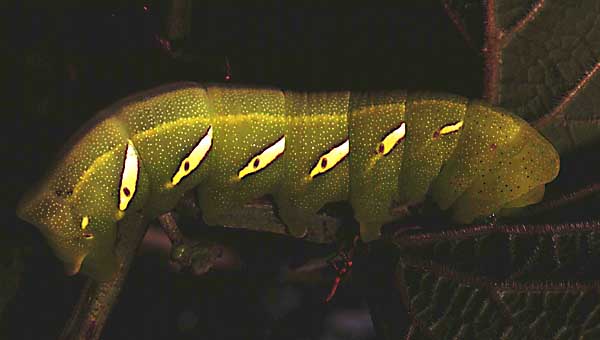 |
Pupation is underground and pupal stage usually lasts five-six weeks before eclosion. The
pupa is long and slender with a long cremaster. |
 |
Jim tuttle writes, "In Eumorpha satellitia the white panels are completely enclosed in black whereas in E. vitis the ends
of the black panels remain open. Also, satellitia has a faint subdorsal longitudinal stripe that touches the top of the white panels that is lacking in vitis."
I suspect there is also a green form, but I have not seen one as yet.
Larval Food Plants
Listed below are primary food plant(s) and alternate food plants. It is hoped that this alphabetical listing followed by the common name of the foodplant
will prove useful. The list is not exhaustive. Experimenting with closely related foodplants is worthwhile.
Return to Philampelini Index
Return to Sphingidae Index













